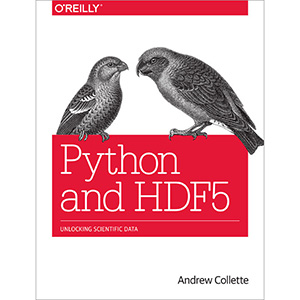Python and HDF5

Gain hands-on experience with HDF5 for storing scientific data in Python. This practical guide quickly gets you up to speed on the details, best practices, and pitfalls of using HDF5 to archive and share numerical datasets ranging in size from gigabytes to terabytes.
Through real-world examples and practical exercises, you’ll explore topics such as scientific datasets, hierarchically organized groups, user-defined metadata, and interoperable files. Examples are applicable for users of both Python 2 and Python 3. If you’re familiar with the basics of Python data analysis, this is an ideal introduction to HDF5.
- Get set up with HDF5 tools and create your first HDF5 file
- Work with datasets by learning the HDF5 Dataset object
- Understand advanced features like dataset chunking and compression
- Learn how to work with HDF5’s hierarchical structure, using groups
- Create self-describing files by adding metadata with HDF5 attributes
- Take advantage of HDF5’s type system to create interoperable files
- Express relationships among data with references, named types, and dimension scales
- Discover how Python mechanisms for writing parallel code interact with HDF5
Table of Contents
Chapter 1. Introduction
Chapter 2. Getting Started
Chapter 3. Working with Datasets
Chapter 4. How Chunking and Compression Can Help You
Chapter 5. Groups, Links, and Iteration: The “H” in HDF5
Chapter 6. Storing Metadata with Attributes
Chapter 7. More About Types
Chapter 8. Organizing Data with References, Types, and Dimension Scales
Chapter 9. Concurrency: Parallel HDF5, Threading, and Multiprocessing
Chapter 10. Next Steps
Book Details
- Paperback: 152 pages
- Publisher: O’Reilly Media (October 2013)
- Language: English
- ISBN-10: 1449367836
- ISBN-13: 978-1449367831














